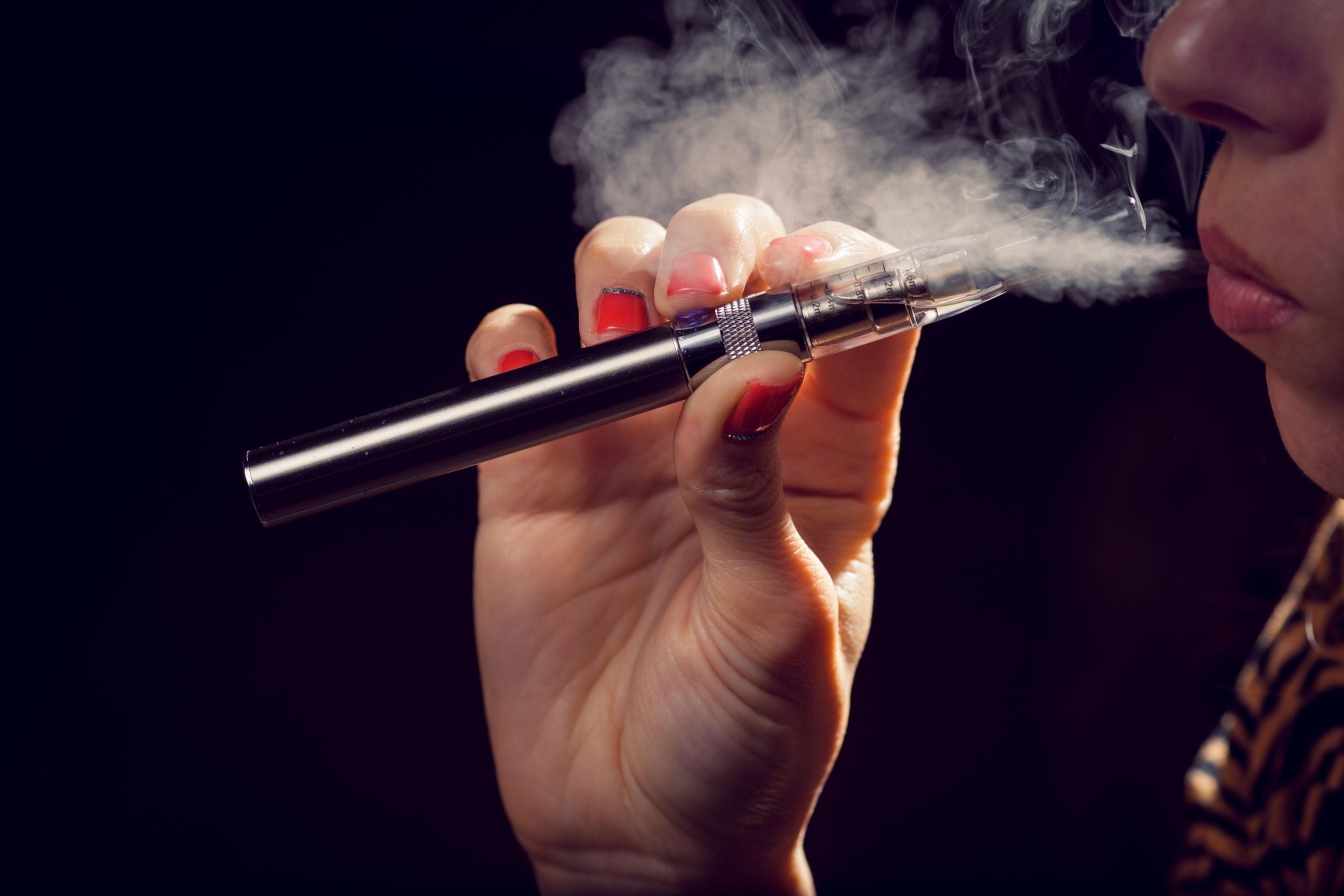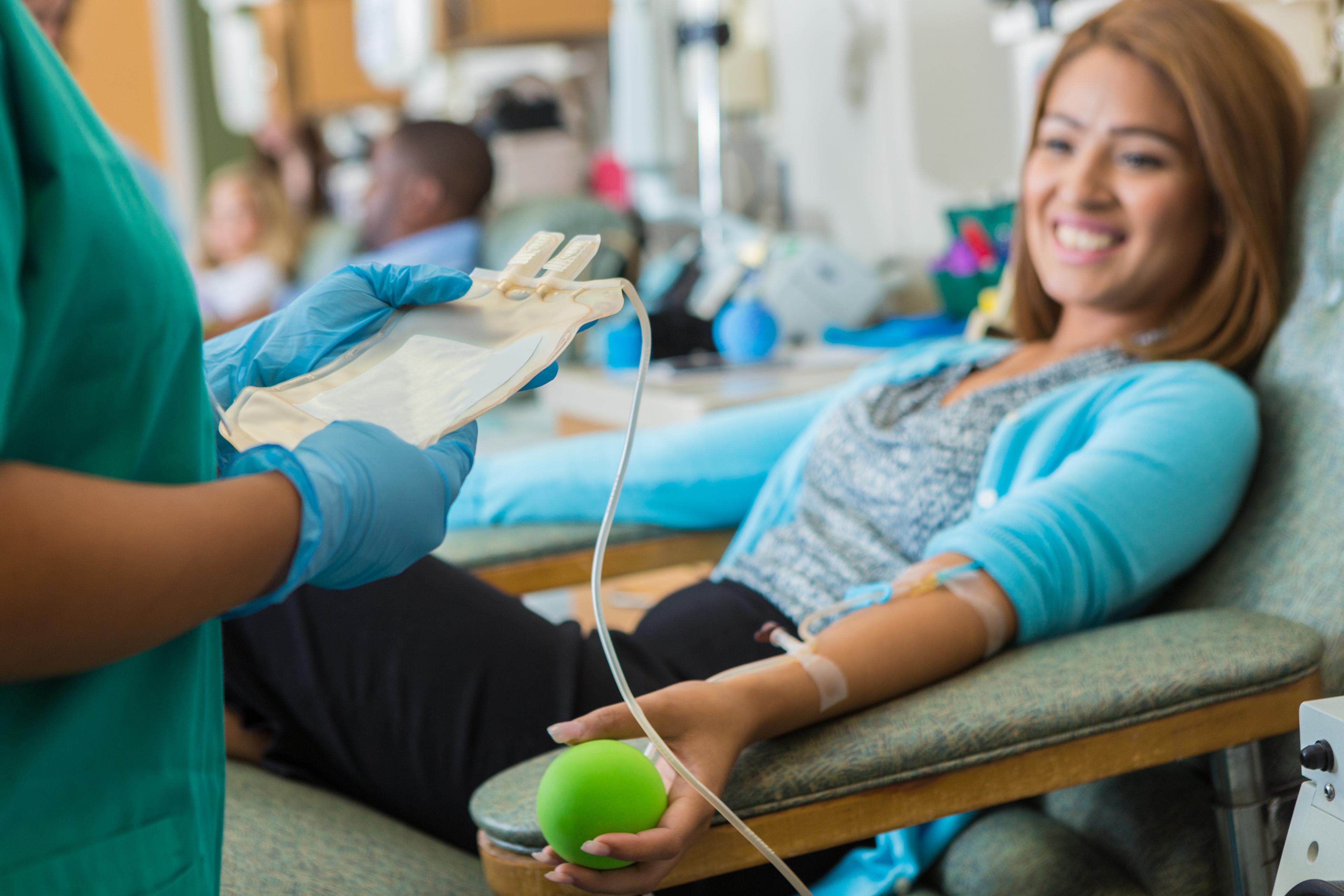Panel: Teen Vaping Increases Likelihood of Addiction Issues as an Adult
Julie Bitely
| 5 min read

Michael Ostrander knows when one of his students is using an e-cigarette, or vaping, in the bathrooms at Belding High School. The school district installed sensors that send a text to the principal and other staff when the aerosol that’s produced from an e-cigarette or vape pen is exhaled. It might sound like an extreme measure, but with 2019 findings from the Centers for Disease Control revealing that more than 1 in 4 high school students reported using electronic cigarettes within the past 30 days – an increase from 1.5% in 2011 – it’s necessary to identify kids using the banned products. The subject of vaping was discussed at the most recent Health Forum of West Michigan, monthly panel talks dealing with pressing health topics sponsored by Blue Cross Blue Shield of Michigan. Ostrander spoke on a panel that also included Brian Hartl, an epidemiologist with the Kent County Health Department, Dr. Vita McCabe, a thoracic surgeon with St. Joseph Mercy Health Hospital and Cheryl Phillips, coordinator of St. Joseph Health’s Health Exploration Station. Why vaping is a growing concern for today’s youth E-cigarettes can look like USB drives, pens or a variety of other items you might find in a teen’s room. Hartl explained the devices, which heat a liquid containing nicotine or other substances and release the aerosol or vapor, can even be personalized with superheroes or your favorite sports team. The liquid can come in flavors appealing to teens – think cotton candy and chocolate chip cookies – and catchy names and marketing make it easy to see why teens and young adults might perceive e-cigarettes and vaping as less harmful than smoking traditional cigarettes. But Hartl, McCabe and other health professionals say that’s not the case. They point to EVALI, or e-cigarette or vaping product use-associated lung injury. Last year, 2,711 cases of EVALI were reported, leading to 60 deaths. Three people died of EVALI in Michigan, with 65 cases identified. More than 75% of patients with EVALI were younger than 35. While most cases of EVALI involved the use of THC, the only way to completely avoid the risk is to avoid e-cigarette and vaping products altogether, particularly if it’s unknown to the user what the liquid they’re inhaling through the device contains. Hartl said even e-cigarettes marketed with no nicotine typically have some amount. According to the CDC, nicotine can harm a developing adolescent brain and young people who use it may also face an increased risk for future addiction to other drugs. McCabe said using e-cigarettes is like inhaling a can of aerosol hairspray. When people use e-cigarettes, they’re inhaling carcinogenic, cancer-causing ingredients that coat the airways and lungs. But just knowing that often isn’t enough to stop young people from making that decision, fueled by peer pressure, a desire to fit in or other reasons. “I would have tried this if I were 18 and still smoking,” said McCabe, who gave up cigarettes 10 years ago. She said the best approach to helping someone quit isn’t about patronizing or shaming – it should be about helping and understanding. The health consequences of decisions you make when you’re young can seem far away, she explained. McCabe said we should try to learn from past mistakes made with cigarettes and tobacco. It’s comical now to see cigarette advertisements featuring doctors touting their favorite brands in the 1950s and 1960s and McCabe sees parallels with the youth-focused marketing of e-cigarettes today. “They don’t pick cancer patients to advertise cigarettes or vaping,” she said. Helping kids kick their vaping habit Along with sensors in restrooms at Belding High School, principal Ostrander has a not-so-secret weapon to help kids. The school benefits from a grant-funded, on-staff, full-time recovery coach. The coach is currently working with about 60 kids with a variety of addiction issues – about 10% of the school’s total population. Ninety percent of students who have worked with the recovery coach on vaping issues have quit, Ostrander said, and the approach aligns with the school’s “support over suspension” policy. Along with awareness efforts warning about the dangers of vaping to the entire student body, kids caught in the act or with a device are required to undergo some level of more intensive education up to and including working with the recovery coach. “Telling someone to just quit this behavior doesn’t work,” he said. “Recovery starts with a relationship.” Phillips, from the Health Exploration Station, a popular field trip destination in Canton, said community outreach programs focused on vaping she’s helped coordinate have reached more than 40,000 students and adults in southeast Michigan. Informal surveys she’s conducted with middle and high school administrators show that 100% have taken some steps to educate students on the dangers of vaping and 70% focus on restorative practices in addition to or in lieu of suspension when a student is caught. For schools without a recovery coach in the building, districts are working with their school resource officers, local police departments, youth networks and community coalitions to educate their students on the vaping issue. Phillips said there are also online resources such as My Life, My Quit and the Truth Initiative that are valuable starting points to help teens who want to quit or parents and adults find effective ways to talk about the issue. Find related content here:
- Lung Illness Outbreak Linked to Vaping
- How to Keep Your Lungs Healthy All Year Long
- How Blue Cross Can Help Your Employees Quit a Costly Habit
Photo credit: 6okean





